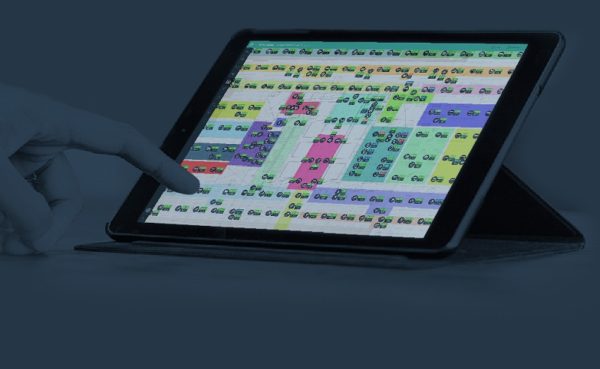Providing lighting for the elderly, particularly in facilities that are specifically designed to cater to the needs of our more senior citizens, should not be a “one size fits all” type of exercise!

Unfortunately, although lighting control is often provided to some degree in retirement homes and other centres catering to our aging population, it’s commonly used for simple scheduling of lights in community areas, perhaps automating lights to turn off in unoccupied areas, and occasionally may be linked with the emergency lighting to make compliance easier.
Very seldom is a tailored solution for lighting control in retirement or aged-care facilities considered to account for the unique and diverse needs of the residents. If the appropriate building technology is to be installed to assist with operational simplicity and energy efficiency, it surely makes sense to consider how else, with a little customisation, a control system can offer so much more to those who live or work in the environment?
Intelligent Environments have assisted with the implementation of lighting control, and associated technology, into many retirement villages and aged care facilities across New Zealand. We offer a free consultation service to encourage those responsible for such centres to look at the bigger picture of how modern technology can provide so many more benefits, with little impact on the construction budget.
Challenges As We Age
Common conditions in older age include hearing loss, cataracts and refractive errors, back and neck pain and osteoarthritis, chronic obstructive pulmonary disease, diabetes, depression and dementia.
Building technology cannot make these conditions disappear, but can help to make the built environment more comfortable for those experiencing these challenges and provide for those with specific needs:
Poor Vision
Aging takes a toll on our eyes! When we’re young, our eyes are at their best—our lenses are clear and flexible, and our retinas are packed with light-sensitive cells called photoreceptors, allowing us to see things sharply.
However, as we age, several changes occur. Our lenses gradually become yellow and stiff, leading to a condition known as presbyopia. Our pupils also become smaller, allowing less light to enter the eye. Meanwhile, the number of photoreceptors decreases, and the nerves that transmit visual information to the brain become thinner. All these changes result in a less efficient visual system.
It’s important therefore that lighting for ‘older eyes’ can be easily adjusted to suit the task in hand. A young person may be able to complete detailed work in an area where the illumination is considered “mood lighting”, but a more senior individual will need more specific task lighting to prevent eye strain or the frustration that accompanies the inability to see what is required.
Leveraging lighting control in retirement/aged care facilities allows us to create various lighting effects suited to different tasks. Depending on the situation, direct or indirect lighting might be best. Dimmable lights are also essential, as they let us adjust brightness based on the activity or time of day.
A good lighting design for community areas, will take this into consideration. Some areas may be well lit, providing opportunities for reading or handwork, while others may have more subtle lighting, for quiet conversation, or TV viewing.
Dementia Care
Research shows that individuals with dementia benefit significantly from lighting that aligns with their circadian rhythms. Such lighting can improve sleep quality, mood, and overall quality of life.
Dementia care facilities often operate with 24/7 staff on rotating shifts, and their needs to be considered too.
This means that while residents’ rooms need lighting that supports their sleep/wake cycles, areas like nurse stations, corridors, and service areas (such as kitchens and staff rooms) may have entirely different lighting requirements that adapt to the staff’s varying schedules.
Health and Wellbeing
With depression and emotional insecurity more common in the elderly, it is certainly worth considering a rethink in our approach to lighting design. Instead of sticking to traditional, generic solutions, should we not look at adopting a more personalised human-focused approach?
Human-Centric Lighting (HCL) is the answer here. HCL goes beyond ensuring adequate visibility; it prioritises health, well-being and productivity for people of all ages.
Older individuals often require more intense lighting, and adapting to these needs can be straightforward. As eyes age and lenses turn yellow, they have a harder time seeing blue light. This can be addressed by using higher colour temperatures, around 5000-6500K, which fall in the blue-white range and mimic natural daylight—perfect for helping maintain our circadian rhythms.
Older eyes can be more sensitive, disliking shadows and flickering, so consistent and steady lighting is crucial for the elderly. It’s also important to align lighting with natural body clocks, using brighter, bluer light during the day and softer, warmer light in the evening to promote better sleep.
To achieve this, we need to shift from static lighting setups to dynamic systems that adapt throughout the day to suit everyone’s needs.
Implementing a human-centric system requires careful planning from the initial stages of building design but can be applied to both new constructions and renovations, with every aspect of the lighting design planned carefully to meet the specific needs of the residents and staff.
Our experience in using today’s advanced technologies, like zencontrol‘s DALI-2 (wired) and DALI+ (wireless), enables precise control over light intensity, colour, and timing, which can then be tailored to the users’ needs and movement patterns throughout the day. This approach is not just about lighting for the elderly; it’s about creating the right lighting to enhance life itself!
Beyond Lighting
The control system for your aged care facility can include an integrated system of zencontrol tuneable switches and sensors that can measure air quality, VoCs, temperature, humidity, and presence, as well as occupancy and light levels.
User-friendly dashboards can present data in a way that is easy for your facility manager to understand, so they can monitor the health of the building, and make adjustments as required.
Innovative new technology has seen the introduction of zencontrol thermal sensors with their wide range of benefits particularly relevant to health or residential care facilities.
These sensors have real-time presence sensing with AI onboard, powering zone-based control and people counting.
With the ability to monitor up to 4 distinct zones (e.g. the bed, armchair, remaining space), target alerts and lighting control can be enabled.
Without the expense or privacy invasion of camera-based systems, care assistants can see at a glance whether a resident is in bed, sitting in their armchair, or is out of their room.
Conclusion
Implemented appropriately, technology can play a crucial role in enhancing the quality of life for those both living, and working, in aged care facilities.
Addressing many of the challenges associated with aging, technology can offer solutions that promote independence, improve health and safety, and foster social connections.
In facilities where 24 hour staffing is required, the requirements of staff and residents may be quite different, but both can be allowed for without compromise.
If you’d like to know more about lighting control and other technologies suitable for aged care or retirement facilities, please get in touch.


